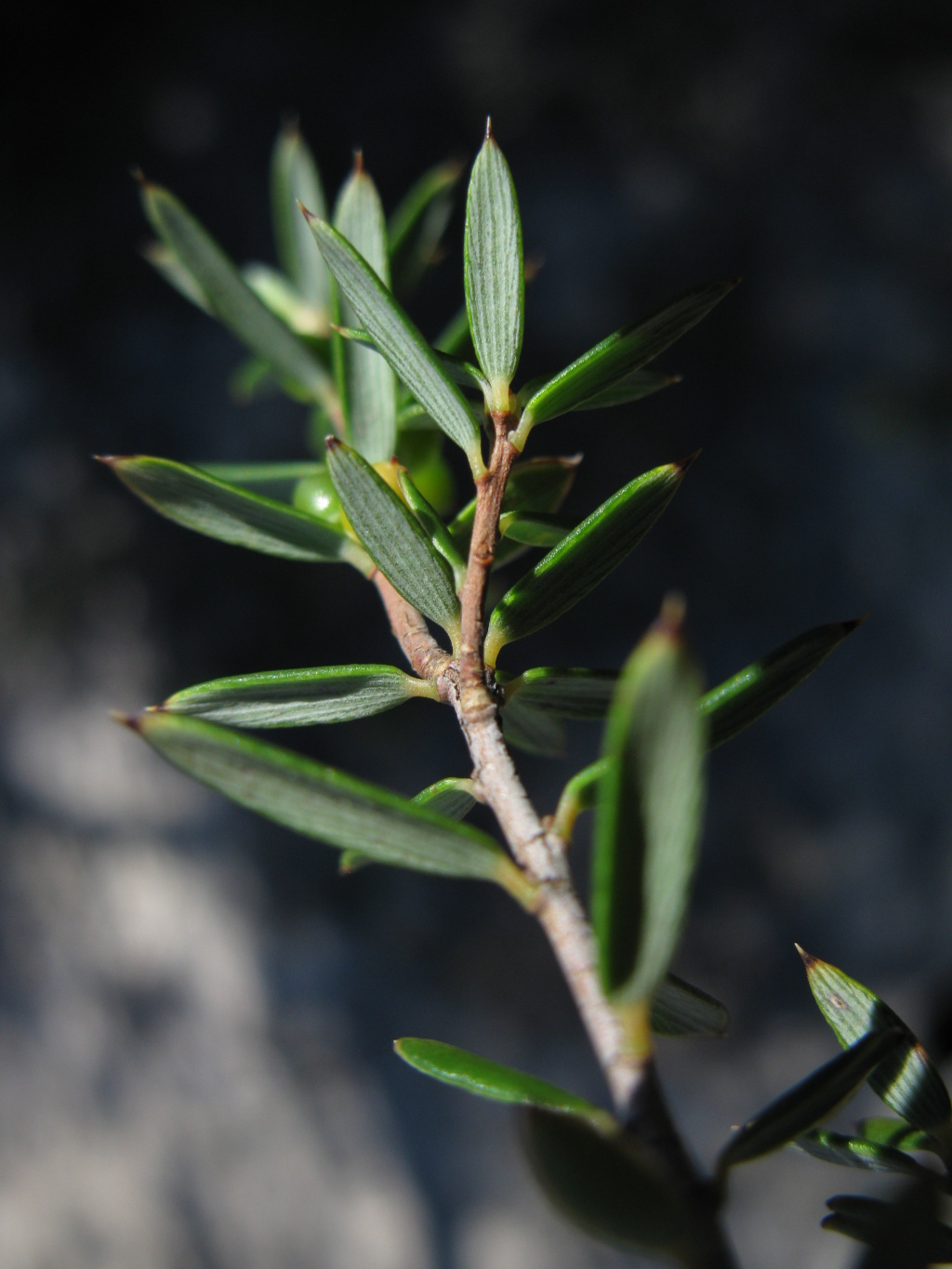Monotoca scoparia
(Sm.) R.Br. Prickly Broom-heathLignotuberous shrub to c. 2 m high; branchlets sparsely hispidulous to glabrous. Leaves narrowly oblong to elliptic, c. 7–16(–22)mm long, 1–3 mm wide, mucronate, convex, glabrous, lower surface dull pale green to whitish; margins usually recurved, smooth; petiole often puberulous abaxially when young. Flowers 2–9 in axillary spikes, or the lowermost solitary, subsessile; lowermost spikes with peduncle 0–0.6 mm long, usually with 1–4 sterile bracts; bracts, bracteoles and sepals obtuse; bracts persistent, 0.3–0.9 mm long; bracteoles 0.7–1.2 mm long; sepals 0.9–1.9 mm long; corolla whitish-cream, campanulate, 1.3–2.8 mm long in female flowers; 2–4 mm long in males; lobes glabrous to papillose, shorter than or rarely equal to the tube; anthers 1.1–2.1 mm long, usually enclosed within or half-exserted from corolla tube; ovary plus style 0.8–1.4 mm long. Fruit ovoid to c. spherical, 2.5–3.5 mm long, pale yellow at maturity. Flowers Dec.–Aug.
LoM, Wim, GleP, VVP, VRiv, GipP, OtP, Gold, CVU, GGr, DunT, NIS, EGL, EGU, WPro, HSF, HNF, OtR, Strz, MonT, HFE, VAlp. Also SA, Qld, NSW, Tas. Occurs from sea-level to montane elevations in well-drained sandy or rocky sites, mostly in heath-land and heathy woodland.
Plants from New South Wales and Queensland have orange fruit but only yellow fruit have been observed in Victorian populations. Occasionally hybridizes with M. billawinica, and rarely with M. glauca.
Albrecht, D.E. (1996). Epacridaceae. In: Walsh, N.G.; Entwisle, T.J., Flora of Victoria Vol. 3, Dicotyledons Winteraceae to Myrtaceae, pp. 464–509. Inkata Press, Melbourne.
 Spinning
Spinning

